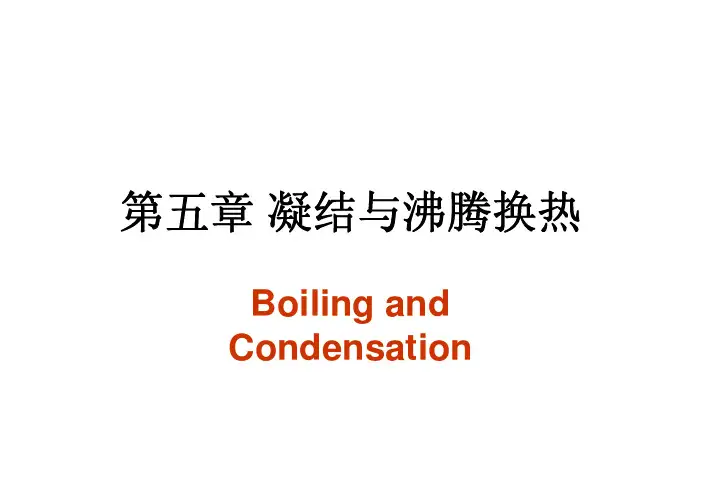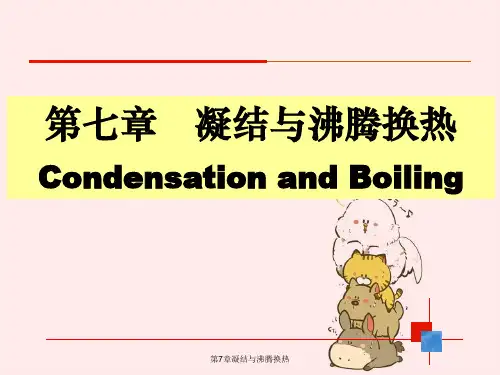凝结与沸腾换热PPT课件
- 格式:ppt
- 大小:1.52 MB
- 文档页数:81

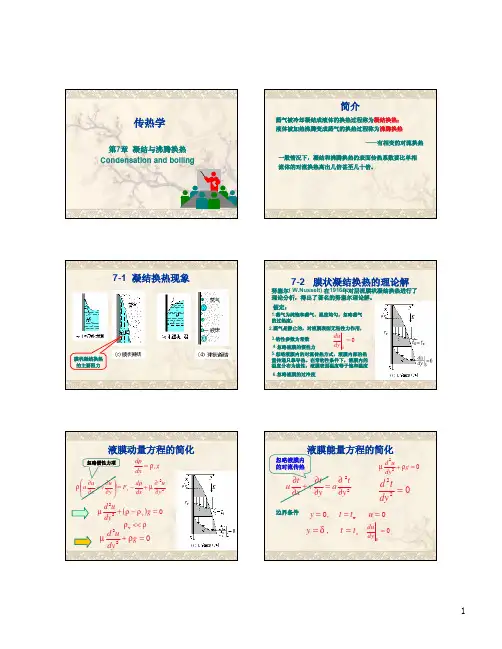
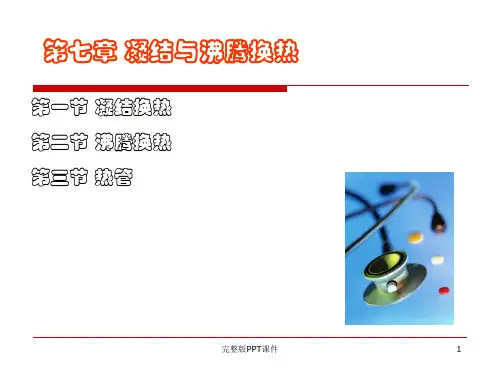
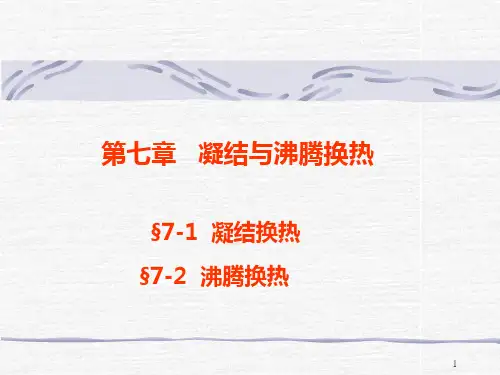

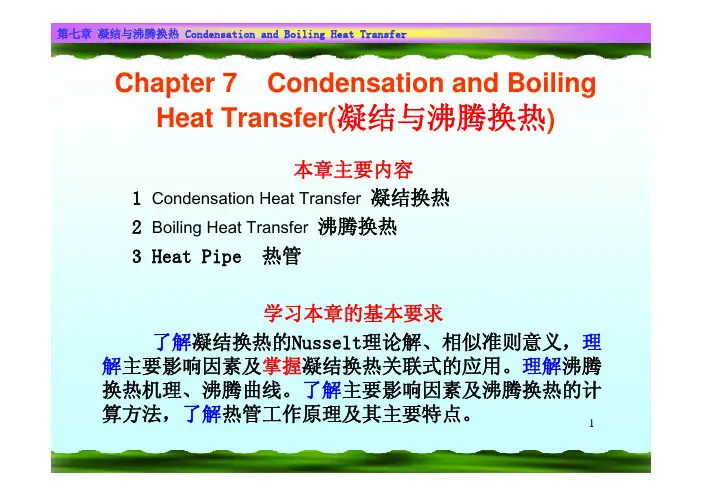
1Chapter 7 Condensation and BoilingHeat Transfer(凝结与沸腾换热)本章主要内容1 Condensation Heat Transfer 凝结换热2 Boiling Heat Transfer 沸腾换热3 Heat Pipe 热管学习本章的基本要求了解凝结换热的Nusselt理论解、相似准则意义,理解主要影响因素及掌握凝结换热关联式的应用。
理解沸腾换热机理、沸腾曲线。
了解主要影响因素及沸腾换热的计算方法,了解热管工作原理及其主要特点。
2§1Condensation Heat Transfer工质在饱和温度下由气态转变为液态的过程称为凝结或冷凝(condensation),而在饱和温度下,由液态转变为气态的过程称为沸腾(boiling)。
1-1 Introduction1、The process of condensationIf the temperature of the wall is bellow the saturation temperature of the vapor, condensate will form on the surface. (壁温低于蒸汽饱和温度时)(1)Film condensation 膜状凝结If the liquid wets the surface, a smooth film is formed, and the process is called film condensation 膜状凝结。
这是最常见的凝结形式。
例如,水蒸气在洁净无油的表面上凝结。
膜状凝结时,壁面总是被一层液膜覆盖着,凝结放出的相变热(潜热)要穿过液膜才能传到冷却壁面上去,且蒸气凝结只能在膜的表面进行,潜热以导热和对流方式通过液膜传到壁。
液膜层是换热的主要热阻,故液膜的厚薄及其运动状态(层流或紊流)对换热的影响很大。
这些又取决于壁的高度(液膜流程长度)以及蒸气与壁的温差。
